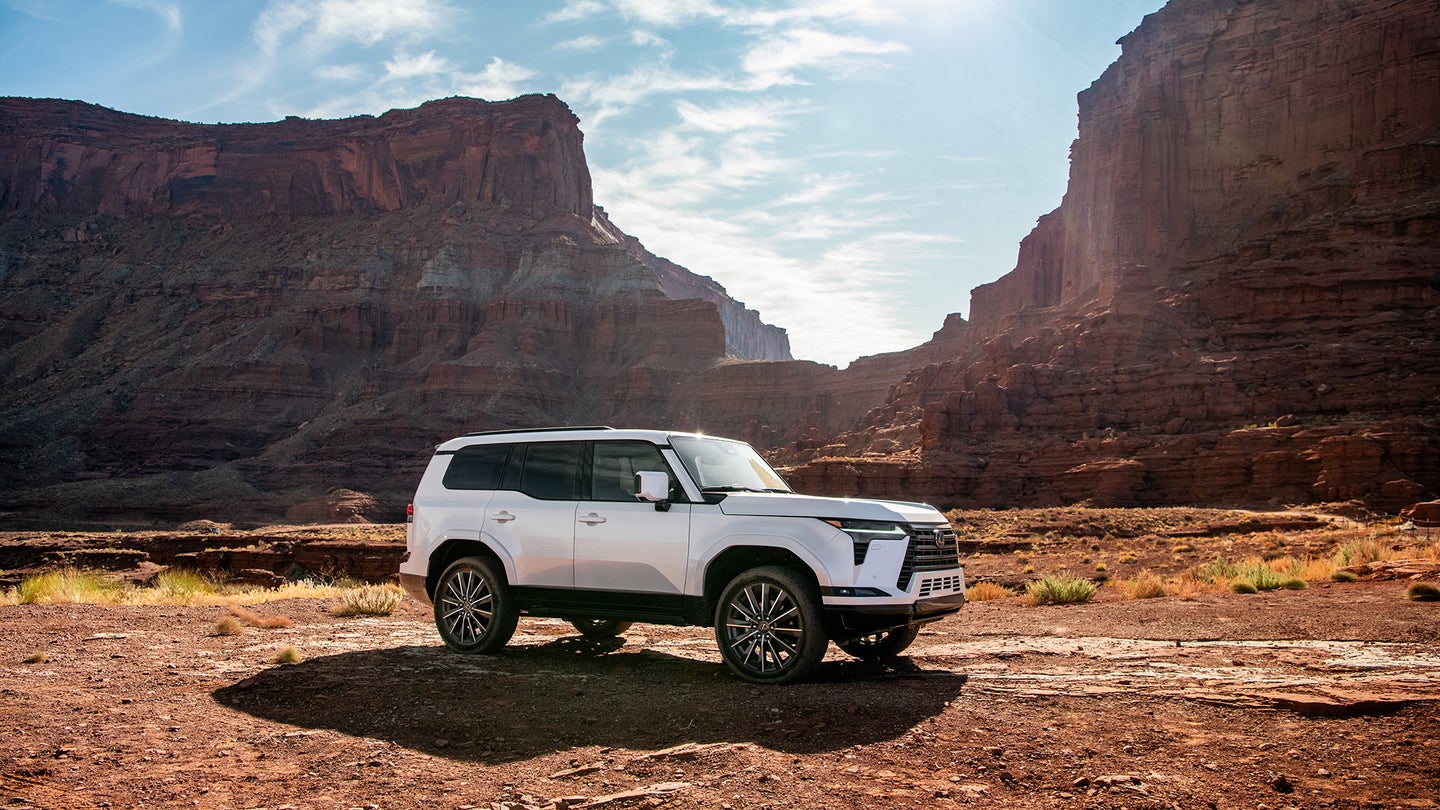
Lexus has given its GX SUV a major makeover, and not a moment too soon. The GX has a new engine, new suspension, and new technology, all on Toyota’s latest SUV and truck platform. With a new design that looks like its edges are carved from a hunk of shiny metal, the 2024 GX 550 looks sharper and more squared-off than the previous generation.
As the adage goes, however, looks are only skin deep. Lexus GX chief engineer Koji Tsukasaki would agree; when asked which came first, design or engineering, he emphatically says engineering.
“The platform was first, above everything,” he told PopSci.
The engineering team started with Toyota’s global GA-F platform and leaped off, building a capable and highly anticipated SUV on the way.
Stronger and lighter
In the lineup, the GX slots between the largest Lexus vehicles in the lineup, the LX and TX, and the smaller RX crossover. Less displacement plus turbo equals more power in 2024, and the numbers tell the story. The new GX is equipped with a 3.4 twin-turbo V6 engine generating 349 horsepower and 479 pound-feet of torque. That’s a big jump compared to the previous generation, which was powered by a 4.6-liter V8 engine capable of 301 horsepower and 329 pound-feet of torque.
It’s clear that Lexus is playing into the upward trend of overlanding/off-roading with this SUV. That goes double for the pair of new trim levels–Overtrail and Overtrail-Plus–which ride on fat 33-inch all-purpose tires and are equipped with settings made for dirt, sand, mud, and snow.
One of the ways they achieved that was by using non-linear tailor welded blanks, which are steel sheets of differing thickness and material, joined by laser welding and then press-formed. By pinpointing the weld points precisely where they’re needed most, the vehicle realizes substantial weight reduction while maintaining its rigidity. Trimming weight makes a difference: the new Lexus GX is about 750 pounds lighter than its target competitor, the Land Rover Defender 130. A Land Rover Defender 130 tips the scales at 6,415 pounds, while the new GX maxes out at 5,666. Lexus engineers intend for that to play out in better handling and maneuverability for on- and off-road use.
The biggest difference between the outgoing and new GX models is increased rigidity even with less weight, GX chief engineer Koji Tsukasaki told PopSci. Typically, he says, increasing rigidity adds weight, but the lighter frame and welding process balanced the scales.
Electronic controls improve suspension
In many ways, the 2023 Lexus GX was old school, retaining its naturally-aspirated (non-turbo) V8 engine and outdated infotainment interface. The second generation of the SUV kicked off with the 2010 model and it has remained largely unchanged before the 2024 model, which will be available within the next couple of months.
Four-wheel drive remains a standard feature on the GX. While the previous generation of the GX included a kinetic dynamic suspension system (KDSS, for short), a mechanical system that adjusts front and rear stabilizers with interconnected hydraulic cylinders. For 2024, Lexus kicked up the suspension with an electronically controlled version the brand calls E-KDSS, available on the Overtrail and Overtrail-Plus trims. It uses sensors within the anti-roll bars in the front and rear to adjust the stabilizers, improving wheel articulation (which is what keeps all four tires in contact with the ground on uneven terrain).

Stabilizer bars, also called sway bars, are a key part in a suspension setup, reducing the vehicle body’s roll and sway. Sway bars twist to keep the body flatter, putting more pressure on the outside tire to increase traction. And with this electronic adaptation, the system can activate the front and rear sway bars independently, which improves overall control.
“[The E-KDSS] detaches the stabilizer sway bar, allowing you even longer contact [on the ground],” Tsukasaki says.
The chief engineer says his team set out to give the GX what Lexus calls its “driving signature” so that the SUV feels like other vehicles in the lineup. Lexus is known for quiet, plush cabins and attractive exteriors, so the GX had to fit in even while adding more driving proficiency on more varied terrain. That’s not a simple matter for a body-on-frame vehicle like the GX. Body-on-frame refers to the construction of the vehicle, which brings the chassis and body together separately; a unibody (like the Land Rover Defender) is characterized by the chassis and body as a single unit.
Two or three times a year, Lexus hosts an event for all its vehicles’ chief engineers to come together and drive each other’s cars. From that, the engineers tweak things like reinforcements, wheel housings, and braces to ensure that every Lexus measures up.
“You could jump in any Lexus vehicle, and they should have that common driving signature, but to have that on a body-on-frame car was challenging,” Tsukasaki says. “We had to go back and adjust the chassis so [the GX] could accommodate that extra added feel that connects all of the vehicles together. That’s something we’re proud of.”
The post 2024 Lexus GX gets an edgy new look and improved tech appeared first on Popular Science.
Articles may contain affiliate links which enable us to share in the revenue of any purchases made.
from Popular Science https://ift.tt/jhRnYA1




0 Comments